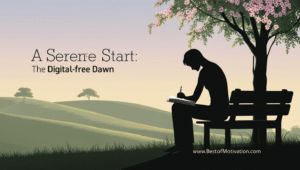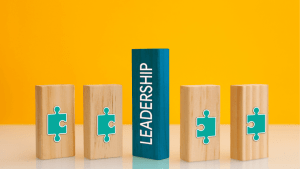In today’s fast-paced world, the ability to remain composed and maintain a sense of calm under pressure has become an essential skill that separates the successful from the overwhelmed. Mastering the art of keeping cool is more than just a personal attribute; it’s a game-changer that can significantly impact your professional and personal life.
With the stakes higher than ever, it’s time to equip yourself with proven techniques that will enable you to navigate through life’s challenges with grace and resilience. In this comprehensive guide, we will explore powerful strategies and practical tips that will not only help you stay calm under pressure but also transform the way you approach stress and adversity. So, take a deep breath and join us on this enlightening journey towards self-mastery and unwavering tranquility.Understanding the Importance of Staying Calm Under Pressure
In an increasingly complex and competitive world, the ability to maintain poise and composure under pressure has emerged as a crucial determinant of success. When faced with high-stakes situations, those who can keep their cool are better equipped to make sound decisions, communicate effectively, and stay focused on the task at hand. Moreover, a calm demeanor can inspire confidence and trust in others, fostering strong personal and professional relationships.
The converse is also true—succumbing to stress and anxiety can impair judgment, hinder productivity, and undermine one’s credibility. In the long run, chronic stress may even take a toll on mental and emotional well-being, leading to burnout, anxiety disorders, and depression. Thus, the importance of staying calm under pressure cannot be overstated—it is a vital skill that can profoundly impact both our personal and professional lives.
In the following sections, we will delve into the science behind stress and staying calm, identify practical strategies for managing stress, and explore the benefits of cultivating emotional resilience. By understanding the mechanisms that underpin our reactions to stress and adopting proven techniques to stay calm under pressure, we can unlock our full potential and thrive in the face of adversity.
The Science Behind Stress and Staying Calm
Stress is an inevitable part of life—a natural response to perceived threats or challenges. When faced with a stressor, our bodies activate the “fight or flight” response, releasing hormones like adrenaline and cortisol that increase heart rate, blood pressure, and muscle tension. This heightened state of arousal allows us to react quickly and effectively to potential dangers. However, when stress becomes chronic or overwhelming, it can wreak havoc on our physical and mental health.
The key to staying calm under pressure lies in our ability to regulate our physiological and psychological responses to stress. This involves engaging the parasympathetic nervous system, which counteracts the fight or flight response by promoting relaxation and restoring balance in the body. Several factors can influence our capacity to remain calm under pressure, including genetics, past experiences, and coping skills.
Fortunately, there are numerous strategies and techniques that can help us enhance our ability to stay calm under pressure. By developing a deeper understanding of our stress triggers and adopting practices such as deep breathing, mindfulness, and physical exercise, we can train our bodies and minds to cope more effectively with stress and maintain a sense of equilibrium even in the most challenging situations.
Identifying Your Stress Triggers
The first step in mastering the art of staying calm under pressure is to identify the specific situations, events, or factors that trigger stress in your life. These stress triggers may vary widely from person to person, and they can be both internal (e.g., negative thoughts or unrealistic expectations) and external (e.g., work deadlines or interpersonal conflicts).
To pinpoint your stress triggers, consider keeping a stress journal for a few weeks. Record the situations that cause you stress, noting the time, place, people involved, and your emotional and physical reactions. Over time, patterns may begin to emerge, revealing the primary sources of stress in your life. This information can serve as a valuable starting point for developing targeted strategies to manage stress and stay calm under pressure.
Once you have identified your stress triggers, take some time to reflect on how you typically respond to them. Are there any patterns or habits that tend to exacerbate your stress levels? How can you modify your reactions to promote a greater sense of calm and control? By becoming more aware of your stress triggers and responses, you can begin to take proactive steps to mitigate their impact and cultivate a more balanced, resilient mindset.
Breathing Techniques to Stay Calm Under Pressure
One of the most effective ways to counteract the physiological effects of stress and promote relaxation is through deep, controlled breathing. When we are stressed, our breathing tends to become shallow and rapid, which can further exacerbate feelings of anxiety and tension. By consciously focusing on our breath and taking slow, deep inhalations and exhalations, we can stimulate the parasympathetic nervous system, lower our heart rate, and reduce muscle tension.
There are several breathing techniques that can help you stay calm under pressure. The most basic technique is diaphragmatic breathing, which involves inhaling deeply through the nose, allowing the diaphragm to expand and fill the lungs with air, and then exhaling slowly through the mouth. Another popular method is the 4-7-8 technique, in which you inhale for a count of four, hold your breath for a count of seven, and exhale for a count of eight. Experiment with different breathing techniques to find the one that works best for you, and practice regularly to strengthen your ability to stay calm under pressure.
It is important to note that deep breathing is not just a reactive strategy to employ when you are already feeling stressed. Incorporating deep breathing exercises into your daily routine can help to preemptively activate your parasympathetic nervous system, creating a foundation of calm and resilience that will serve you well when faced with challenging situations.
Mindfulness and Meditation Practices for Stress Reduction
Mindfulness and meditation are powerful tools for managing stress and staying calm under pressure. Both practices involve focusing your attention on the present moment and cultivating an attitude of non-judgmental awareness. By learning to observe your thoughts, emotions, and bodily sensations without becoming entangled in them, you can develop a greater sense of equanimity and resilience in the face of stressors.
There are numerous forms of mindfulness and meditation practices, ranging from traditional sitting meditation to mindful movement exercises like yoga and tai chi. One simple way to begin cultivating mindfulness is by incorporating brief moments of awareness into your daily routine. For example, you might take a few minutes each day to practice mindful eating, savoring the taste, texture, and aroma of your food without distraction. Or you might try a guided meditation app or online course to develop a more structured mindfulness practice.
Regular mindfulness and meditation practice have been shown to produce a wide range of mental and physical health benefits, including reduced stress, improved focus, and enhanced emotional well-being. By integrating these practices into your life, you can build a strong foundation of inner calm and resilience that will enable you to stay composed and grounded even in the most challenging situations.
The Role of Physical Exercise in Managing Stress
Physical exercise is another powerful strategy for managing stress and staying calm under pressure. Engaging in regular physical activity can help to regulate stress hormones, improve mood, and promote relaxation by stimulating the production of endorphins, the brain’s natural “feel-good” chemicals. Additionally, exercise can serve as a healthy outlet for releasing pent-up tension and frustration, providing a sense of accomplishment and mastery that can bolster self-confidence and resilience.
The type of exercise that will be most effective in managing stress may vary depending on individual preferences and fitness levels. For some people, vigorous activities like running, swimming, or cycling may be most beneficial, while others might prefer gentler forms of exercise like walking, yoga, or tai chi. The key is to find an activity that you enjoy and can commit to on a regular basis, ideally incorporating a mix of cardiovascular, strength, and flexibility exercises.
In addition to its stress-relief benefits, regular physical activity can also support overall health and well-being by improving sleep quality, enhancing cognitive function, and reducing the risk of chronic diseases like heart disease and diabetes. By making exercise a regular part of your lifestyle, you can bolster your physical and mental resilience, equipping yourself to better handle stress and maintain a sense of calm under pressure.
Building Emotional Resilience Through Self-Awareness
Emotional resilience is the ability to adapt and cope effectively with stress, adversity, and change. It is a critical component of staying calm under pressure, as it enables us to maintain a balanced perspective and respond constructively to challenging situations. One of the key factors that contribute to emotional resilience is self-awareness—the ability to recognize and understand our own thoughts, emotions, and behaviors.
Developing self-awareness can help us to identify unhelpful thought patterns and emotional reactions that may exacerbate stress and hinder our ability to stay calm under pressure. For example, we might recognize that we have a tendency to catastrophize or engage in black-and-white thinking, which can amplify feelings of anxiety and overwhelm. By becoming more attuned to these patterns, we can begin to challenge and reframe our thoughts, fostering a more adaptive and resilient mindset.
One effective technique for cultivating self-awareness is through journaling. Regularly writing about your thoughts, feelings, and experiences can help to reveal patterns and insights that might otherwise go unnoticed. Another powerful tool for enhancing self-awareness is mindfulness, as it encourages non-judgmental observation of our inner experience. By honing our self-awareness and actively working to shift unhelpful thought patterns and emotional responses, we can build emotional resilience and strengthen our ability to stay calm under pressure.
Time Management and Prioritization Strategies for a Balanced Life
Effective time management and prioritization are vital skills for managing stress and staying calm under pressure. By allocating our time and energy wisely, we can create a more balanced, harmonious life, reducing the likelihood of becoming overwhelmed or burned out. This involves setting clear goals and priorities, establishing realistic expectations, and learning to delegate or outsource tasks when necessary.
One helpful strategy for managing time and priorities is to create a daily or weekly schedule that includes time for work, self-care, and leisure activities. Break larger tasks into smaller, more manageable steps, and allocate specific time slots for focused work on these tasks. Be sure to also schedule regular breaks and downtime to recharge and maintain a healthy work-life balance.
It is also essential to learn how to set boundaries and say no to requests or commitments that do not align with your priorities or values. While this can be challenging, especially for people-pleasers or perfectionists, it is a crucial skill for maintaining a sense of control and calm under pressure. By taking charge of your time and priorities, you can create a more balanced and fulfilling life that supports your overall well-being and resilience.
Creating a Supportive Network for Stress Relief
Having a strong support network is another critical factor in managing stress and staying calm under pressure. Social connections can provide emotional support, practical assistance, and valuable perspective during times of stress, helping to buffer the impact of challenging situations and promote a sense of belonging and well-being.
To build and maintain a supportive network, invest time and effort in nurturing your relationships with family, friends, and colleagues. Cultivate open, honest communication, and be willing to ask for help when needed. At the same time, strive to be a reliable and empathetic source of support for others, demonstrating that you value and care for their well-being.
In addition to strengthening existing relationships, consider joining clubs, organizations, or online communities where you can connect with like-minded individuals who share your interests and values. Participating in group activities, volunteering, or attending social events can also provide opportunities to expand your network and forge new connections. By cultivating a robust and diverse support network, you can enhance your ability to cope with stress and maintain a sense of calm under pressure.
Conclusion: Embracing the Art of Staying Calm Under Pressure
In conclusion, staying calm under pressure is an essential skill that can significantly impact our personal and professional success. By understanding the science behind stress and adopting proven techniques for managing stress and building resilience, we can navigate life’s challenges with grace and equanimity.
Remember, the art of staying calm under pressure is a lifelong journey that involves continuous learning, growth, and self-reflection. Be patient with yourself, celebrate your progress, and embrace the opportunity to become a stronger, more resilient version of yourself.











